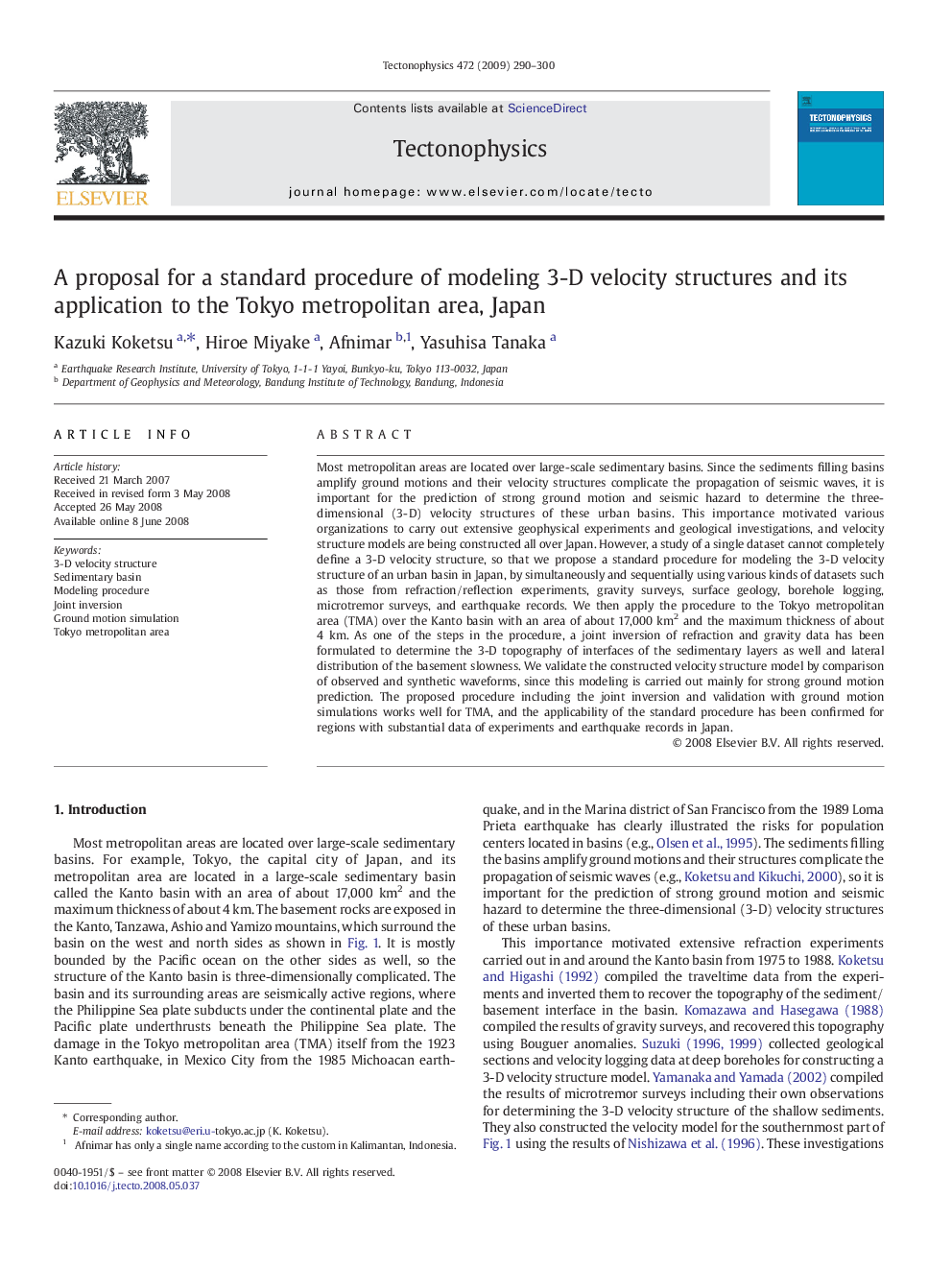| Article ID | Journal | Published Year | Pages | File Type |
|---|---|---|---|---|
| 4693928 | Tectonophysics | 2009 | 11 Pages |
Most metropolitan areas are located over large-scale sedimentary basins. Since the sediments filling basins amplify ground motions and their velocity structures complicate the propagation of seismic waves, it is important for the prediction of strong ground motion and seismic hazard to determine the three-dimensional (3-D) velocity structures of these urban basins. This importance motivated various organizations to carry out extensive geophysical experiments and geological investigations, and velocity structure models are being constructed all over Japan. However, a study of a single dataset cannot completely define a 3-D velocity structure, so that we propose a standard procedure for modeling the 3-D velocity structure of an urban basin in Japan, by simultaneously and sequentially using various kinds of datasets such as those from refraction/reflection experiments, gravity surveys, surface geology, borehole logging, microtremor surveys, and earthquake records. We then apply the procedure to the Tokyo metropolitan area (TMA) over the Kanto basin with an area of about 17,000 km2 and the maximum thickness of about 4 km. As one of the steps in the procedure, a joint inversion of refraction and gravity data has been formulated to determine the 3-D topography of interfaces of the sedimentary layers as well and lateral distribution of the basement slowness. We validate the constructed velocity structure model by comparison of observed and synthetic waveforms, since this modeling is carried out mainly for strong ground motion prediction. The proposed procedure including the joint inversion and validation with ground motion simulations works well for TMA, and the applicability of the standard procedure has been confirmed for regions with substantial data of experiments and earthquake records in Japan.
